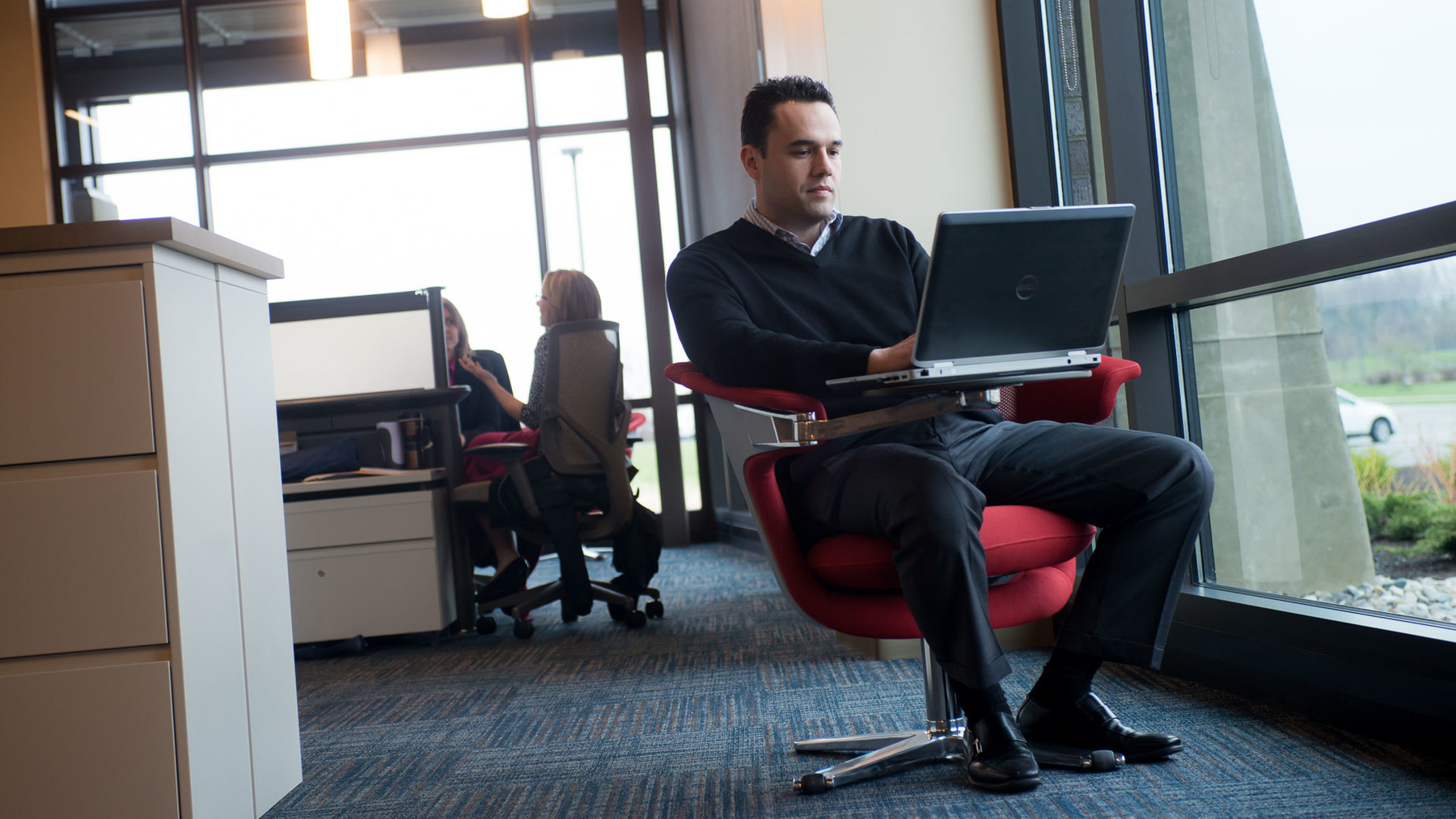The way people work is changing. Employees are finding themselves working from more locations around the office as the financial industry transitions from task-based roles to more complex and collaborative project-based work. Yet workplaces are struggling to keep up with this transition and adequately support their employees.
Leesman, our workplace data partner and the leading tool for measuring the employee workplace experience, has proposed segmenting employees into four mobility profiles to develop a better understanding of how employees work and quantify their needs. Together, we've gathered workplace data from over 1,200 credit union employees that can be used as a benchmark to compare your organization with the industry at large.
At the heart of this mobility discussion is Activity Based Working (ABW), an approach to workplace design and cultural that puts the employee in charge of deciding “Where should I work today such that I can be most effective and provide the most value for my organization?”
Every workplace is unique and there is not a one-size-fits-most solution. Through surveying your employees and developing a strong understanding of their working style and the activities they perform, you can categorize them into these four categories reflecting the mobility profile that would best support the work they do:
- Single Workstation, or as Leesman puts it. "The Camper." These employees perform nearly all of their work activities as a single workstation, and they make up 54% of credit union employees.
- Partly Mobile, or "Timid Traveler." These employees mostly rely on a single workstation, but they do move around the office and use different settings when they need to focus on tasks or collaborate with others. 38% of credit union employees are in this category.
- Mostly Mobile, or "Intrepid Explorer." The inverse of the Timid Traveler, these employees have a dedicated workstation but spend most of their time away from it. This profile represents 6% of credit union employees.
- Fully Mobile, or "True Transient." Completely untethered from an assigned workstation, these employees use a variety of workstations throughout the date. Only 2.4% of credit union employees fall in this category.
An analysis of both Leesman's overall dataset and the credit union industry specifically reveals two major trends. First, employees are shifting towards higher mobility profiles. Every year there are fewer people working from a single workstation, and more people working from a variety of locations throughout the day. And second, higher mobility profiles are associated with higher productivity levels and greater satisfaction and pride in the workplace.
Repetitive work is being rapidly automated, and as this happens employees are shifting into roles with more responsibility covering a wider range of work activities. The financial industry is shifting more rapidly than most, and if too many employees fall into mobility profiles 1 and 2, or if there is a difference between their ideal mobility profile and the way they're working now, this can raise a red flag that the financial industry workplaces are falling out of sync with the changing nature of work.
To dive deeper into mobility profiles and learn more about how the workplace is changing, both due to digital transformation and in response to the COVID-19 pandemic, download Momentum's recent whitepaper. Our analysis of workplace trends is backed up with data gathered from over 1,200 credit union employees.

